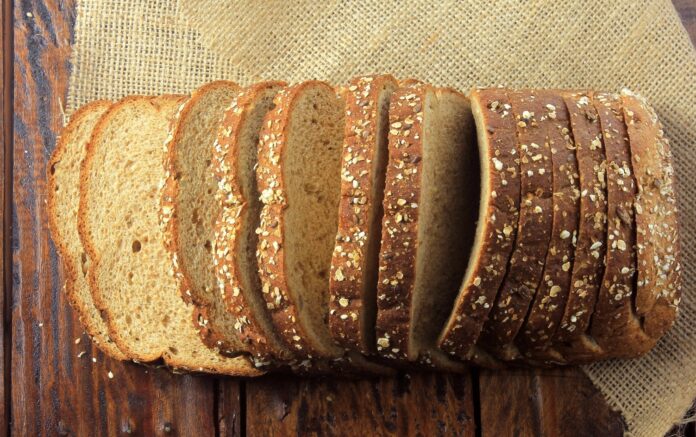Bread—and more specifically, wheat—has been the victim of many health debates over the years.
First, people came after carbs overall. Then, they came after gluten. Now, they’re coming after what’s been dubbed “modern wheat.”
Between popular books and hundreds of #wheatfree reels on TikTok, health influencers and experts alike have blamed modern wheat for everything from digestive issues and weight gain to chronic diseases and autoimmune disorders.
To separate fact from fiction, we dug into some of the science and spoke with registered dietitian, Denise Hernandez, MS, RD, for her take on the wheat controversy.
What is modern wheat?
There are three main types of wheat used today: Triticum vulgare (or aestivum), T. durum, and T. compactum.
“Modern wheat” refers to the wheat that has been processed and refined for mass production.
Studies suggest this process results in higher yields and cost savings, yet also reduces the nutrients in the grains.
Ancient grains vs. modern wheat
In light of the anti-wheat craze, many health gurus have started recommending ancient grains as a healthier alternative to modern wheat.
The Whole Grains Council defines ancient grains as “grains that are largely unchanged over the last several hundred years.”
Popular ancient grains include:
- Quinoa
- Spelt
- Millet
- Amaranth
- Barley
- Farro
But how do these ancient grains compare to modern wheat? Turns out ancient grains may have higher concentrations of mineral micronutrients than modern wheats.
“Analyses of ‘ancient’ and ‘modern’ wheat show that the protein content of modern bread wheat (Triticum aestivum) has decreased over time while the starch content has increased,” Hernandez explains.
The same study also reported that modern wheat contains fewer minerals, including iron, zinc, and magnesium.
While there is science to prove that the nutritional profile of modern wheat is different from that of ancient grains, more research needs to be done to prove any implications on our health, Hernandez notes.
The verdict
Unless you have a gluten intolerance or sensitivity, Hernandez says there’s no evidence to support that modern wheat, while lower in some nutrients, is bad or significantly different than ancient grains.
How to choose healthier bread
All that said, there are ways to healthify your bread selection.
- Check the ingredient list to see whether the grains used are whole or refined. “When choosing a bread, it is recommended to make half of your grains whole grains,” Hernandez explains.
- Look at the nutrition label to find breads that are higher in fiber and/or protein for added nutrition.
Fun Fact: You can track your fiber, protein, and carb intakes in the MyFitnessPal app!
And if you’re looking for more whole grain recipe inspo, we love these whole grain breakfast bowls or this dietitian-approved quinoa granola.
FAQs:
Is modern wheat genetically modified?
No, modern wheat is not genetically modified. The wheat varieties commonly grown today are developed through traditional breeding techniques. Although there are many hybridized strains of wheat, none of them are classified as genetically modified organisms (GMOs).
What are the most common types of modern wheat?
The most common types of modern wheat include:
- Triticum vulgare (or aestivum): Most often found in breads, cakes, and cookies
- T. durum: Often used for semolina, so found in many pastas
- T. compactum: Used for candies and cookies
Is modern wheat unhealthy?
Modern wheat itself is not inherently unhealthy. However, it is often consumed in highly processed forms, such as white bread and pastries, which can be less nutritious due to refined flour lacking fiber and essential nutrients. Whole grain wheat products are a healthier option as they retain more nutrients and fiber.

Are ancient grains gluten-free?
Not all ancient grains are gluten-free. While some ancient grains like quinoa, amaranth, millet, and sorghum are gluten-free, others like spelt, farro, and einkorn do contain gluten. It’s important for individuals with celiac disease or gluten sensitivity to choose gluten-free ancient grains specifically.
Can ancient grains be used as a substitute for modern wheat in recipes?
Yes, ancient grains can often be used as substitutes for modern wheat in recipes. However, the texture and flavor may differ. For instance, using spelt or einkorn in baking may result in a denser product compared to modern wheat. Gluten-free ancient grains like quinoa and amaranth may need additional binding agents for baking.
Where can I buy ancient grains?
Ancient grains can be purchased at health food stores, specialty grocery stores, and online retailers. Some mainstream supermarkets also carry a selection of ancient grains in their natural foods or gluten-free sections.
Are ancient grains more environmentally sustainable than modern wheat?
Ancient grains are often considered more environmentally sustainable than modern wheat. Many ancient grains require fewer inputs such as water and synthetic fertilizers, and they can grow in diverse climates and soil conditions. This makes them a more resilient choice that can potentially reduce the environmental impact of agriculture.








